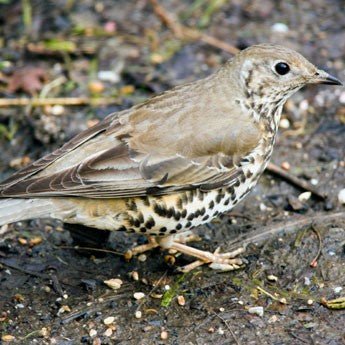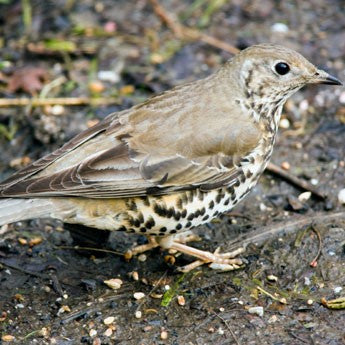
When Exactly is Spring? Understanding Seasonal Changes for Birdwatching
Share
Well, for a start that depends on what latitude you live at. As far as Britain is concerned, the first signs of spring can be immediately in the New Year if you happen to live on the south coast of England, particularly in Devon or Cornwall.
On the other hand if you are in the north of Scotland ,or in Shetland or Orkney, spring wont really arrive until mid May or even early June. I remember having this discussion with the producers of the first Springwatch. The previous year, the show had been called Britain Goes Wild, and had gone out in May. Then they decided to move it to early June, and change the name to Springwatch. My reaction was slightly outraged, and undoubtedly pedantic! “Spring watch? In June? Coming from south Devon? We can’t call it Springwatch! The BBC has a reputation for absolute accuracy. It’ll be the laughing stock of the Nation. You’ll be broadcasting Christmas Special in autumn next!” “So Bill, when would you call spring then?” they asked. “March”, I replied. There was a short silence which I took to mean: “Are you sure?”
“Well, it is March for me, although I have to admit I live in London, and I know the BBC don’t want the viewers to think everything is aimed at Londoners. Added to which, I know we want to feature baby birds in their nests, and that doesn’t really happen much in March plus, very few of the summer migrants will have arrived, and wild flowers will hardly have got going, and things like bats are still hibernating, and it can still be really chilly, and wet, and it won’t be very nice for live outside broadcasts and…..I suppose in June we can look back over the whole spring. As well as the stuff that is still happening. Mmm,“Springwatch!” eh? It is a very good title. OK I was wrong.
But I am not wrong about how early we see and hear those first signs of spring. This year, for me, it was a sunny afternoon just after Christmas, when I first heard and then saw a bumble bee buzzing around my mahonia, which had plenty of yellow flowers that grow in spikes and look like candles, along with leaves that are as prickly as holly. A nice Christmassy touch I always think. I watched her (she would be a queen) for a while, wondering if she was really wise to be out so early. Then, just as the setting sun cast a shadow over the garden, she zoomed purposefully to the base of the nearby fence and scurried off down a bumble bee sized hole at the foot of a slightly rotten post. I wrote out a little sign saying “Careful, hibernating bee” and pinned it to the fence. Not that anyone in my family would disturb it. They never go in the garden!
I saw my bee and a couple of others every now and then in January and February when the sun was out. Trees and bushes stayed black and bare for longer than I liked until my Silver Birch began to bud, followed by the willow and –if I looked really hard – most things destined to be leafy. However, it was the bird song that really began to add cheer to the impending season. The first –as is often the case – was a Missel Thrush. In fact two Missel Thrushes. One favoured a neighbour’s roof, whilst another had commandeered a fine perch right at the top of a very high Plane tree. I wondered which one considered himself to have the most desirable location. They could certainly hear one another, but they showed no signs of envy or aggression. I assume they considered that our road was big enough for both of them.

The Missel Thrushes sang through January. In early February, they were joined by a Song Thrush. I sometimes think that despite both species looking similar – brown above, cream below with lots of spots – they do not consider themselves to be closely related. For a start, the songs are very different. Missel Thrush is very simple. A short phrase, that is sometimes written as a flutey version of “pleased to meet you.” It is loud, and made louder by the fact that not much else is singing. Until the Song Thrush gets going. Its song is much longer and more elaborate, and indeed very variable from bird to bird. My suspicion is that no two Song Thrushes sound the same, and that no individual sings the same song twice. What they do is repeat every phrase, usually twice, and sometimes 3 or 4 times. It is as if the bird is trying out melodies, and repeats them if they sound good. Nearly everything about a Song Thrush’s song sounds good! Good name too.
Another total difference between Song and Missel Thrushes is that Missels build a nest in a fork of a branch, or against the trunk, way up high in a big mature tree. They obviously don’t mind heights. The nest -and even the chicks when they are getting large- may be visible from the ground. Song Thrushes, on the other hand, nest low down, only a few feet from the ground, deep in brambles and particularly in hedgerows. The nest is not visible.
To my mind, a Song Thrush seems closer to a Blackbird (whose latin name –turdus merula- means black thrush). Their songs are similar, except that Blackbirds don’t repeat. So are their nest sites ,and the nests themselves, the only difference being that a Blackbird lines the cup with grass, a Song Thrush lines it with mud , that dries to a smooth surface any master plasterer would be proud of.
So, before the end of February, I had Missel Thrush, Song Thrush and Blackbird all audible round my house, along with the occasional burst of Wren or Dunnock, or snatch of Chaffinch. The other bird that frankly hadn’t stopped singing from one year to the next, as well as both day and night was my local Robin, though as the daylight lengthened his melodies gradually began to lose their melancholy lilt and become decidedly more cheerful. Or was that more “brazen”?
Sure enough, towards the end of February, another Robin visited the garden, presumably intending to usurp the ever present resident. It didn’t last long! They fluttered, tumbled and pecked at each other until the uppity intruder was repelled. I didn’t see him again, although one morning I did think he’d been reckless enough to return, when I saw two birds facing each other on a branch, but instead of fighting they began swaying and bowing in what was clearly a courtship dance. Over the following week a bit of playful chasing occurred, but no rough stuff. They declared their relationship serious when they stood side by side on the garden table gobbling up their mealworm crumble. The Robin equivalent of a romantic supper for two. I like to think that my mealworms brought them together.
As I write (mid March) I keep seeing them carrying nesting material. I have four Robin boxes in various places in my garden, but I bet they choose somewhere less conventional, if not a bit silly, like a hanging basket or an old watering can.
So, there wasn’t much Robin wrestling in my garden this year, but there were still quite a few thrushes. The most entertaining was a dunnock (presumably a male) trying to chase away itself! Or rather, its own reflection. It bounced around for half an hour, lunging and pecking at a small mirror in which was what it clearly presumed was a rival pecking and lunging back. It went on for a couple days before it finally realized that there wasn’t a problem, or a rival, and that the new dunnock that had now hopped into the garden was a female that was his for the taking. They are still together. I predict a nest in my neighbour’s privet.
If my garden has been the scene of a fairly peaceful spring, that is more than I can say for the large pond on nearby Hampstead Heath. The merest glimpse of wintry sun seemed to set off a riot of apparently mindless aggression involving sometimes 20 or 30 Coot. They chug around like jet black tugs with a pure white spotlight of a beak, or clomp along on the shore on absurdly splayed toes. They are faintly comical, until some mysterious signal spurs two of them to launch at one another, wings fluttering, feet flailing like fighting cocks and beaks stabbing like daggers. This is accompanied by an abrasive stuttering sound which acts as the cue for all the other Coots to join in. This isn’t just male challenging male, or even tough love with a female. This is a free for all of demented hooligans. It reminds me of a rugby union match when a couple of players exchange punches and everyone else piles in so that the referee doesn’t know who to send off. Then suddenly they calm down and get on with the scrum. Just as the Coot suddenly stop fighting and go back to chugging, as if nothing has happened.
Actually, talking of tough love, there are few things less tender than a female Mallard being first followed and pestered, and then leapt on by a pack of hormone fuelled males. The sentiment “be gentle with me” is unknown in the duck world. But it is a sign of spring and, let’s face it, a prelude to the appearance of some of nature’s most endearing creatures. Ducklings.
If you would prefer a graceful display of togetherness and romance then look out for a pair of Great Crested Grebes. A species that we can be grateful is so widespread even on urban lakes, and treats us to a mating dance that would grace any ballet. (I was going to say Strictly Come Dancing but Grebes are much more dignified than that.) Baby Grebes are like little fluffy black and white striped humbugs, maybe not quite as cute as newly hatched ducklings, but they do score extra points for their party trick of riding on mother or father’s back. See them at a park near you!
Written by Bill Oddie
